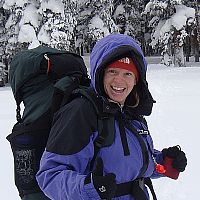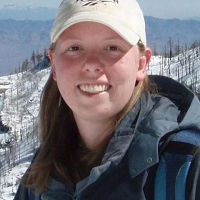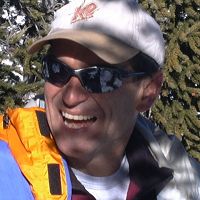Pelletier et al., 2011
Distinguishing grass from ground using LiDAR: Techniques and applications.
Pelletier, J.D., Swetnam, T., Papuga, S.A., Nelson, K., Brooks, P.D., Harpold, A.A., Chorover , J. (2011)
AGU Fall Meeting Presentations Abstract EP51E-05.
-
Catalina-Jemez, INVESTIGATOR
-
Catalina-Jemez, INVESTIGATOR
-
Catalina-Jemez, INVESTIGATOR
-
Catalina-Jemez, GRAD STUDENT
-
Catalina-Jemez, INVESTIGATOR
-
Boulder, Catalina-Jemez, INVESTIGATOR
-
Catalina-Jemez, INVESTIGATOR
Abstract
Standard protocols exist for extracting bare-earth Digital Elevation Models (DEMs) from LiDAR point clouds that include trees and other large woody vegetation. Grasses and other herbaceous plants can also obscure the ground surface, yet methods for optimally distinguishing grass from ground to generate accurate LiDAR-based raster products for geomorphic and ecological applications are still under development. Developing such methods is important because LiDAR-based difference products (e.g. snow thickness) require accurate representations of the ground surface and because raster data for grass height and density have important applications in ecology. In this study, we developed and tested methods for constructing optimal bare-earth and grass height raster layers from LiDAR point clouds and compared the results to high-quality field-based measurements of grass height, density, and species type for nearly 1000 precisely geo-referenced locations collected during the acquisition of a >200 km^2 airborne LiDAR flight of the Valles Caldera National Preserve (New Mexico). In cases of partially bare ground (where the skewness of return heights above a plane fit to the lowest first returns is sufficiently large), a planar fit to the lowest first returns provides a good method of producing an accurate bare-earth DEM and the statistics of the first returns above that planar fit provide good estimates of the mean and variance of grass height. In areas of relatively thick grass cover, however, a fit to the lowest first returns yields a bare-earth DEM that may be a meter or more above the actual ground surface. Here we propose a method to solve this problem using field-measured correlations among the mean, variance, and skewness of grass heights. In this method, the variance and skewness of the differences between LiDAR first returns and a 10m^2 planar fit to the lowest first returns is used, together with field-based correlations of grass height statistics, to estimate the mean grass height. A bare-earth DEM that corrects for the effects of dense vegetation can then be constructed by subtracting the estimated mean grass height from the mean of the LiDAR first returns. We illustrate two applications of this method. First, spectral analysis of grass height raster products of Valles Caldera reveal fractal patterns that reflect the roles of geomorphology (e.g. height above active channel) and small-scale disturbances on grass growth and hence on the spatial variations in grass height. Second, snow thicknesses mapped by airborne LiDAR in the Valles Caldera systematically under-predict the actual snow thickness in riparian areas because the ground-surface in the snow-off DEM fails to represent the true ground surface in areas of tall, dense grass. By comparing a grass-corrected LiDAR-derived snow thickness map to the results of snow survey data acquired during the time of the snow-on LiDAR flight, we show that the techniques we developed minimize this problem.
Citation
Pelletier, J.D., Swetnam, T., Papuga, S.A., Nelson, K., Brooks, P.D., Harpold, A.A., Chorover , J. (2011): Distinguishing grass from ground using LiDAR: Techniques and applications. AGU Fall Meeting Presentations Abstract EP51E-05..
Explore Further







